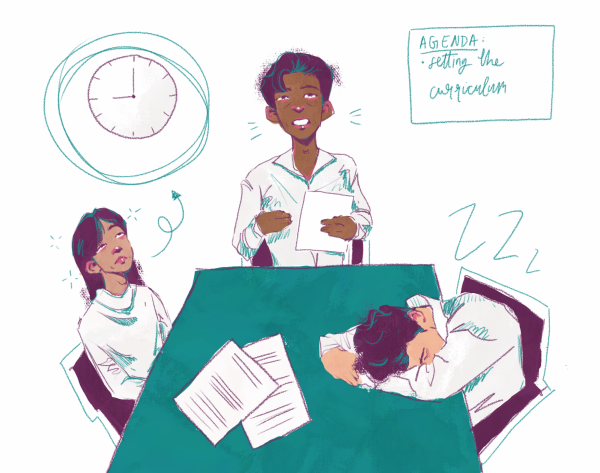Colleges should set policies to assist transgender students
Traditionally, colleges build their campuses to support the needs of two separate genders, male and female. But how do transgender students fit into this picture?
On college campuses across the nation, the community of Lesbian, Gay, Bisexual and Transgender (LGBT) students has come into the spotlight. Many schools have come to the realization that their campuses are not as welcoming to transgender students as they had previously assumed.
Although some colleges and universities have actively made efforts to modify policies, it is in the best interest of all colleges and universities to make changes and establish a universal system that accommodates students who are transgender or gender nonconforming.
A transgender person is someone whose identifies with a gender that differs from his or her birth sex. During the college application process, a prospective transgender student has to take into consideration more complications than a non-transgender student.
In the education system present today, many schools lack the experience and training to deal with transgender issues and lack knowledge of, or are insensitive to, the needs of the transgender population. Of the many areas of concern, the biggest dilemmas are housing situations, restrooms and acceptance into all-female or all-male colleges.
There are several universities and colleges that have already taken the steps necessary to become more “trans-friendly”, and are building a more inclusive student community.
Using the restroom is a basic need of every human being. However, transgender students often face harassment from their peers for using the “wrong” restrooms. By giving only two options, male or female, transgender students are forced to reveal their gender identity and are placed in a vulnerable position in front of their peers. Students who do not identify with their birth sexes often have to put the concerns of others in front of their own in order to not make them uncomfortable.
As more and more schools have come to recognize this growing problem, an increasingly number of colleges have begun to implement gender neutral restrooms. With this additional option, transgender and gender nonconforming students have the option to live in a safer environment, further increasing campus accessibility to accommodate all students.
Additionally, many colleges only provide single-sex housing, which is based strictly on a person’s birth sex. Consequently, transgender students may feel unsafe or uncomfortable in such living environments.
In order to accommodate transgender students, gender neutral housing is another option that schools should provide.
This type of housing at colleges gives students the option to be roommates with a person of a different sex or gender. It may be particularly important for students who are in the process of discovering their gender identity, or transgender students in general. Currently, there are a handful of schools that are providing this type of housing, but it will take the effort of all colleges to help make every student feel accepted and welcome .
At all-female or all-male schools, institutions have typically observed the tradition of solely accepting only women or only men. However, in this period of time where acceptance of all expressions of sexuality has gained popularity, many of these colleges are forced to reevaluate their methods and decide how or whether to admit transgender students. As of now, only three women’s colleges have formally opened their doors to the transgender community. These colleges are Simmons College, Mount Holyoke College and Wellesley College. They have each changed their policies to create a more inclusive admission process. Under the new policies, students who identify as female, regardless of their birth sexes, will be accepted.
Being a member of today’s society is no longer a matter of being biologically male or female, and it should be in the interest of all colleges and universities to recognize students who do not fall into such distinct categories.
Prospective transgender students should not have to research and ask if a college has standards that will accommodate their needs. Instead, it should be a given that the majority of, if not all, schools will have campuses that are trans-friendly.
Inclusion is essential. As transgender students ask which schools will meet their needs, colleges should answer those questions by setting a universal standard to embrace and accept them into university life and education.
Your donation will support the student journalists of Palo Alto High School's newspaper












